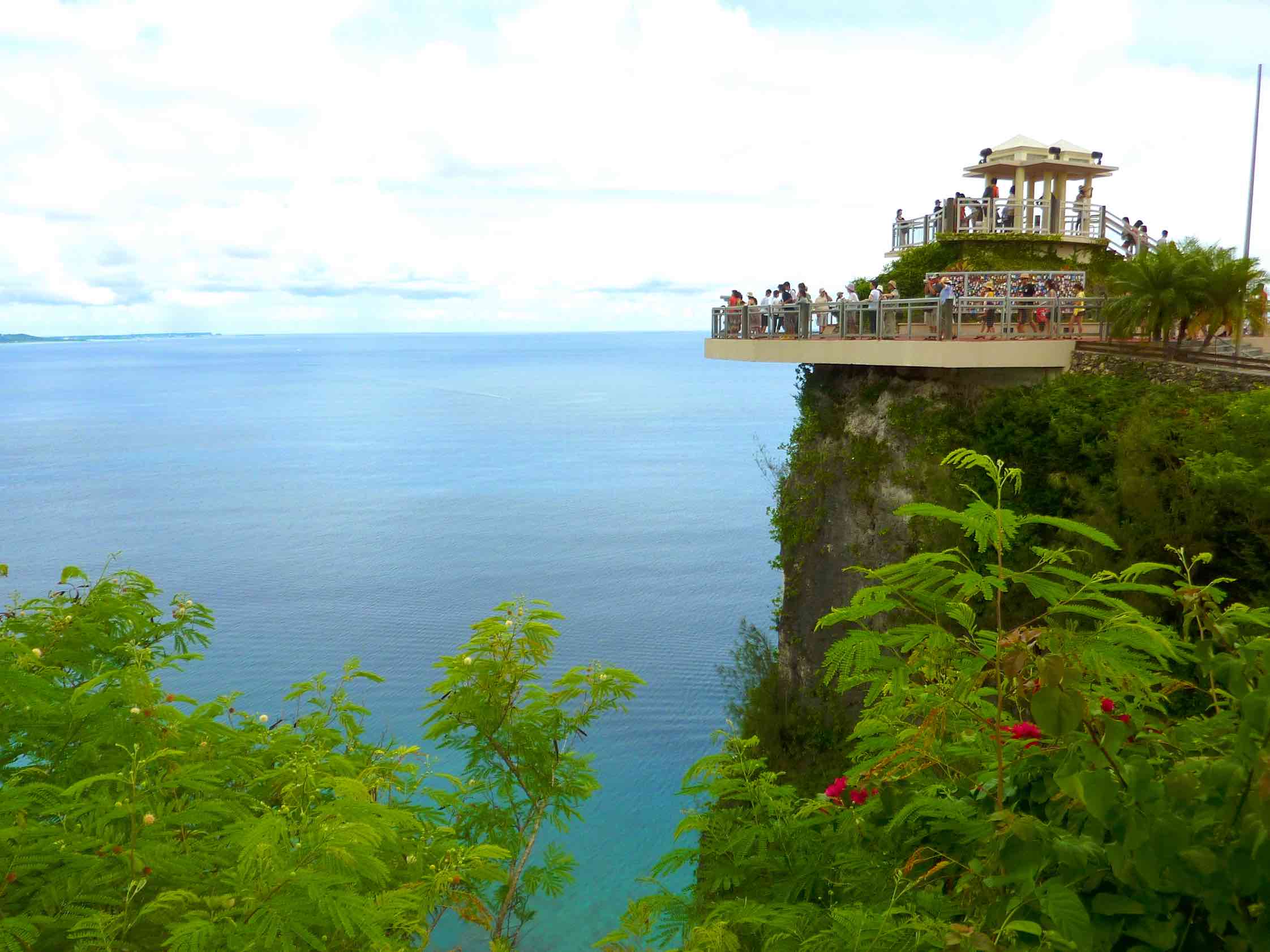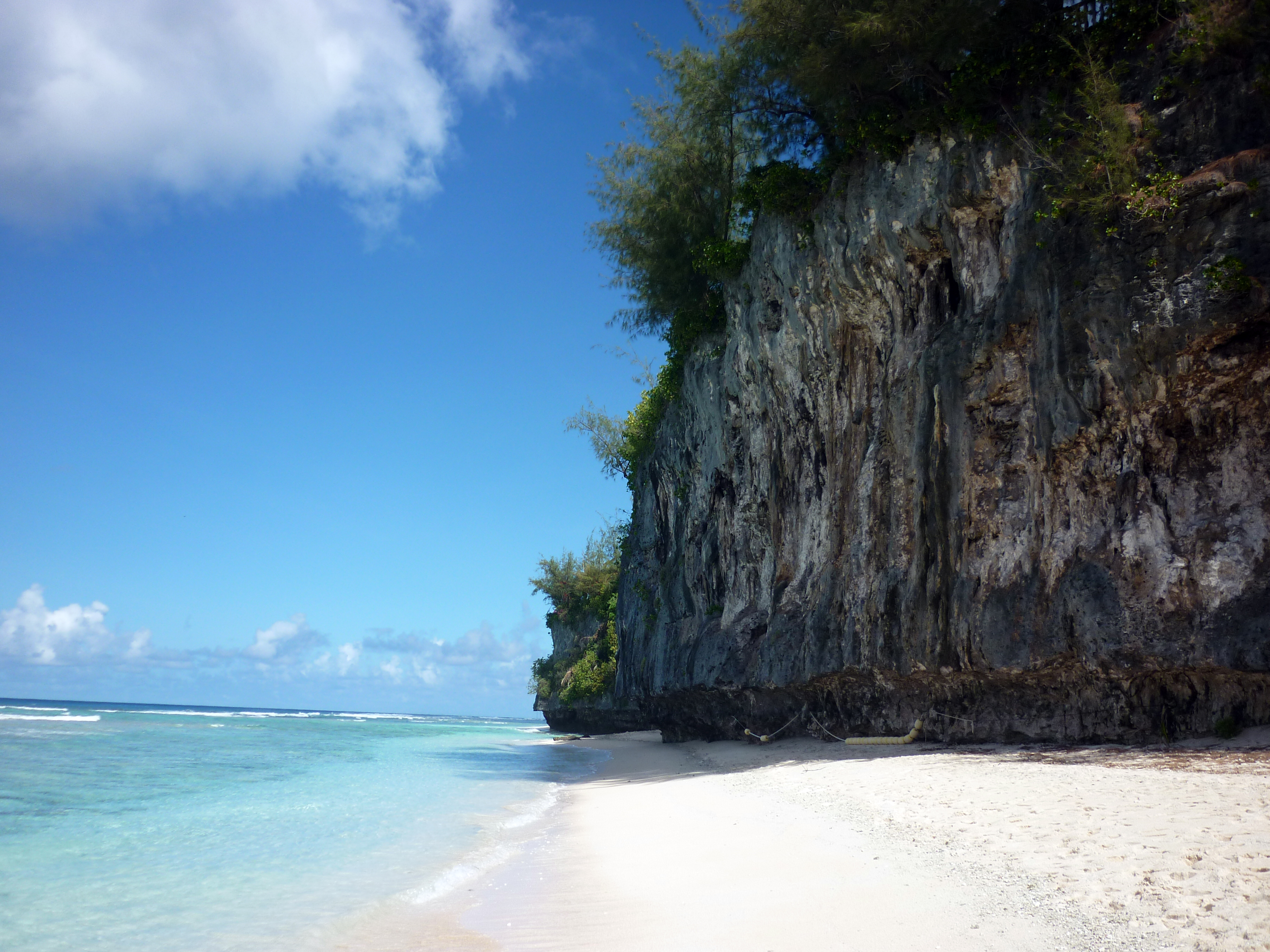Pacific Islands
A Leap of Love in Guam
An old folk legend of the Pacific explains an ancient people’s love of their land. By Roderick Eime
March 27, 2019
Rebecca Murphy
March 27, 2019“Halt!” the captain yelled, but the couple only ran faster, away from the pursuing Spanish soldiers and the enraged officer. In their bare feet, they scaled the jagged limestone and hauled each other up the steep slopes and through the thick undergrowth until they reached the top.
They stood for a moment, breathless, their chests heaving, appealing to each other with a long yearning stare. At first, eyes wide in panic then, as their breath returned and their gaze locked on each other, their fear subsided. As if lifted by unseen angels, the terror of the chase vanished and they held each other in a long embrace. A gust of sea air rushed up the cliff, caught her long hair and swirled it around like a silken banner.
“Stop! I have orders to shoot,” the captain shouted again, furious at their defiance and the exhausting climb to the top of the cliff, but their eyes remained steadfast on each other. The young fugitive reached behind her, his thickly muscled and tattooed arm gently gathered up her hair and tied it in a knot to his own. They whispered something, held each other even tighter and leapt.
The legend of the two lovers of Tumon Bay is an enduring Guamanian folk tale with several versions, but each rendering ends with the couple sealing their fate on the rocks below. A concrete lookout and statue commemorate their final act of devotion and busloads of tourists visit Two Lovers Point every day. Thousands of multi-coloured luggage tags are affixed to a mesh screen, each declaring someone’s perpetual love for another and a special outdoor chapel is well used by the many Japanese newlyweds making up most of the visitors.

Guam, part of the Marianas, is the largest and most populous island in Micronesia with some 180,000 residents. Roughly one third call themselves ‘Chamorro’ (indigenous Guamanian), while the remainder comprise Filipino (25%), other Pacific Islanders (11%) and the rest Asian and Caucasian. Politically, Guam is an unincorporated organised territory of the US, a status it shares with Puerto Rico. Strategically important, the US military maintain large naval and air force bases.
At just 4.5 hours by 737 directly north from Cairns, Guam was once served by an American airline which withdrew services to Australia last year. Guam has been something of a tourism blind spot for most Australians since then, however Nauru Airlines, the airline of the central Pacific recently announced flights from Australia to Guam would recommence.
Guam serves as a hub for the wider region and flights leave every day to the other Micronesian islands of Saipan, Rota, Yap, Palau, Truk, Pohnpei, Kwajalein, Kosrae and Majuro.
Apart from their two-year occupation of Guam during WWII, the Japanese connection with the island is still strong. Japanese tourists dominate the 1.2 million annual visitors (over 70%), daylight second, then Koreans (13%), Americans, Taiwanese and the rest, including the roughly 4000 Australians. The Hyatt, Hilton, Sheraton, Nikko and Pacific Island Club are all majority Japanese owned.
As a curious sidebar, one Japanese soldier was found in 1972, still refusing to surrender. Sgt. Shoichi Yokoi was the last survivor of a group of 10 so-called ‘holdouts’ who had taken to the jungle after the Allied invasion in 1944. A replica of his cave has been built on the original site at Talofofo Falls Resort Park.
To date, most Australian leisure travellers transit through Guam to access the rich scuba diving locations throughout Micronesia like Palau, Yap, Truk and Kosrae. The world-renown marine biodiversity and abundance of unplundered WWII shipwrecks make the entire region a magnet for serious divers from all over the world.
The traditional Chamorro
The Chamorro (or Chamoru) people of Guam first arrived in the Marianas about 4000 years ago from Southeast Asia and share ethnic roots with other Austronesians such as Filipinos, Indonesians and Malaysians. Their language too is from the Malayo-Polynesian family that accounts for the vast majority of Pacific Islanders. “Hafa Adai!” (half a day) is a common, if peculiar-sounding greeting that you will hear all over Guam.
Opened at Gun Beach, at the northernmost point of Tumon Bay, is the Lina’la’ Cultural Park, a recreation of a Chamorro village styled on pre-contact designs of 500 years ago. Based on the popular concept seen throughout the Pacific and SE Asia, you meet Chamorro people living and working much as Ferdinand Magellan found them in 1521. In fact, during the excavation and building of the site, progress was interrupted while archaeologists were called in to identify and catalogue the growing number of artefacts turning up. Now these finds form part of the display in the small museum on site.
Chief Ben ‘Lam Lam’ San Nicolas greets guests wearing little more than his forebears would have worn all those centuries ago. “Hafa Adai!” he bellows in local fashion. In authoritative style, Ben teaches visitors a little about local traditions and handicrafts, history and culture. The handful of thatched-roofed structures are built on the ‘latte’ stone foundations which are common throughout the island and now serve as a national symbol.

There’s a guma’ uritao, or men’s house and a central cooking house contains a chahan, or pit, where root vegetables and fish were cooked atop fiery rocks and covered with leaves. Coconuts (niyok) were abundant on the island then as they are now and guests can try their hand at a traditional coconut grater with a sharp clamshell.
Ben is no actor or choreographed tour guide, he is the real deal and takes his cultural duties seriously.
“We learn from the past to live in the present to build a future for all generations,” he says earnestly to a few guests who have stayed back after the crowd has left. Five centuries have seen his people transformed from a simple and sustainable island existence to a westernised, Christian population irretrievably altered by exposure to the world’s influences.
Soon after the arrival of the Spanish missionaries and military in 1668, the predictable onset of diseases occurred, ravaging the population. Furthermore, zealous Catholic clergy actively stifled the Chamorro culture and publicly punished those caught practising their old ‘pagan’ ways.
Perhaps the modern adaptation of the ancient Two Lovers tale, where an enraged Spanish officer pursues the couple to their defiant death, signifies the Chamorro’s steadfast will and adherence to tradition.
On the beach below those frightening cliffs is a cave where two giant sandstone monoliths recline as if in repose, together forever in the land they love.
© 2024 Pacific Island Living Magazine all Rights Reserved
Website by Power Marketing